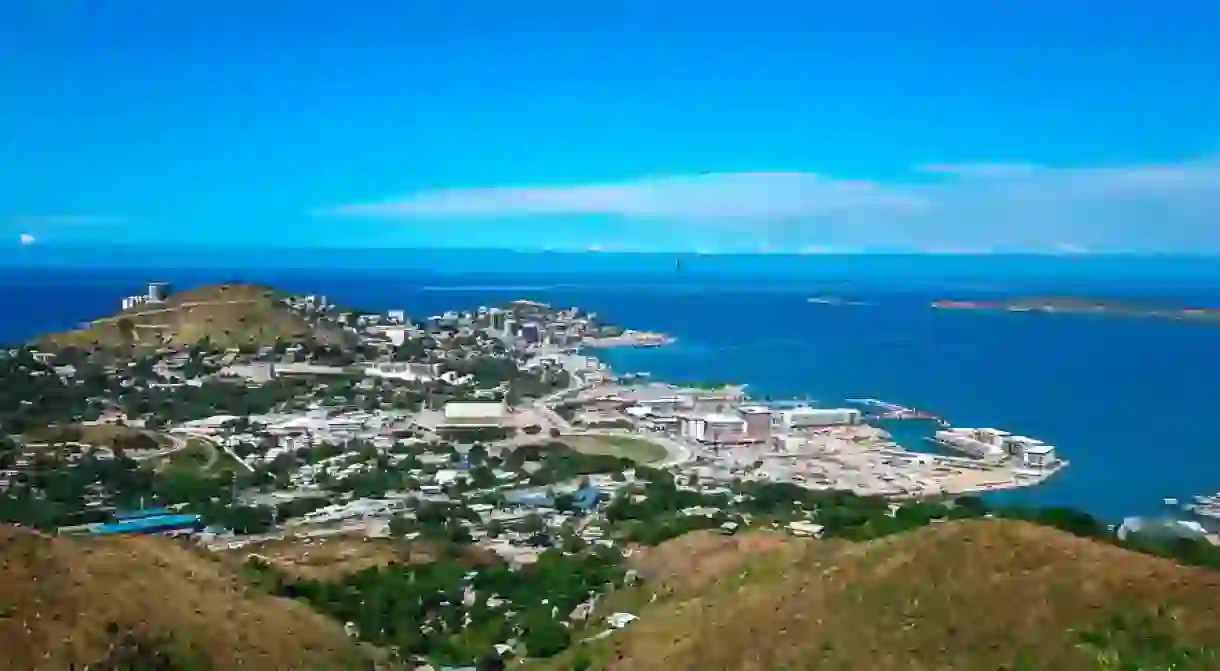The 8 Best Things to Do and See in Papua New Guinea

While Papua New Guinea (PNG) may still have a reputation for being a dangerous place to visit, the tourism industry is growing. Adventure travellers are drawn to beautiful nature hikes, fishing, kayaking and scuba diving opportunities. There’s little tourism infrastructure, so at times it can be difficult to get the right information and advice, but the country offers incredible sights and activities for those wishing to explore.
Port Moresby Nature Park
The Port Moresby National Park is an idyllic break from the rest of PNG’s capital city, a piece of tranquility away from the bustle of travelling and other travellers. The botanical gardens and zoological park is home to over 150 animals, including kangaroos and reptiles, and it’s the only rainforest track in the city. Take a walk through the boardwalk and enjoy some of the native plants and 11,000 orchids planted in the park, including mexican fire plants, false christmas cactus, guava and giant taro.

Kokoda Trail
This 96km Kokoda Trail isn’t for the faint-hearted; this challenging trail through dense rainforest takes on average around 10 days to complete, with the peak of the trail rising over 7,000ft. This trail is rich in war history as it is the site where over 600 Australians were killed and over 1,000 wounded by Japanese forces in 1942. The best time to hike the Kokoda Trail is between May to October, in the dry season. There are plenty of tours available for travellers to be guided through this incredible hike, be sure to book ahead to secure a tour for your trip.
Bomana War Cemetery
The Bomana War Cemetery is the final resting place for hundreds of servicemen from World War II, killed in action in Papua and Bougainville. There are over 3,200 burials, and this is the only cemetery in PNG to contain white marble headstones and a Stone of Remembrance. Among those buried are 700 unidentified servicemen. The ANZAC Day memorial service (the April 25th memorial day for New Zealanders and Australians killed at war) is held at this site.
Hike up to the highest point in Papa New Guinea
Mount Wilhelm is the highest mountain point in the whole of Papa New Guinea. Whilst the hike is not technical, it is physically a very hard climb and recommended only to those who are fit, healthy and ready to take on the challenge. The hike itself is definitely a commitment, taking up to 3-4 days to complete it. Every traveller should be prepared for the challenge, so be sure to research beforehand and join a group or tour that can guide you through the adventure safely.

Scuba diving
Papua New Guinea is famous for its scuba diving, as the islands offer incredible marine diversity. There are over 600 volcanic islands which make up the nation and act as a playground for divers, with barrier reefs and coral walls, as well as a number of wreck dive sites containing ships, aircraft and submarines from World War II. Some of the best places to get an underwater wildlife fix include Kimbe Bay, in the West New Britain Province, Milne Bay, just off the beach at Cape Vogel and Kavieng, located at the tip of New Ireland. These areas are abundant in incredible underwater scenery and wildlife. Expect to see everything from pilot whales, to dolphins, sea turtles, dog-tooth tuna and bright colourful reef.

National Museum and Gallery
One of the best ways to delve into the history and culture of Papua New Guinea is with a visit to the National Museum and Gallery. The museum has over 25,000 archaeological collections and over 20,000 war relics. It is known as the ‘spiritual house’ that encompasses Papua New Guinea’s rich history over the ages. A walk through the museum is certain to have a remarkable effect as visitors are immersed in Papua New Guinea’s story and culture. The museum also has a small collection of contemporary art from PNG such as drawings, paintings and sculptures. The museum and gallery also hosts a variety of events and exhibitions throughout the year, so be sure to check out what is on during your visit to this cultural hub.
Asaro Mudmen
The Asaro Mudmen, the warriors in Papua New Guinea who cover themselves in mud and wear grey mud masks are a famous sight. It’s thought that the origins of the mudmen came from an enemy tribe which had been defeated. The men retreated into the Asaro River, and when they came out of the banks they were covered in grey mud. When the enemy tribesman saw them, they were terrified of these ghost-like figures and believed them to have special powers. Today there are tours to the village where the scene is recreated for tourists.













